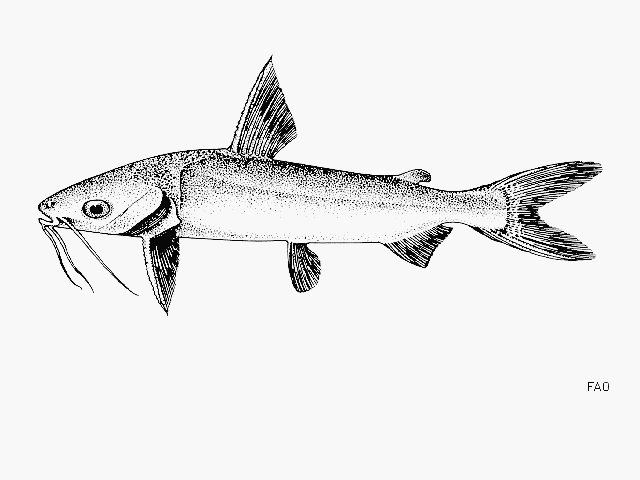| Ariidae (Sea catfishes), subfamily: Ariinae |
| 35 cm SL (male/unsexed) |
|
demersal; freshwater; brackish; marine |
| Western Indian Ocean: along the east coast of Africa and Madagascar (Ref. 3290). Eastern Indian Ocean: Indonesia (Java and Sumatra), Singapore and Celebes. Western Pacific: Papua New Guinea (Ref. 7050) and Australia (Ref. 7300). |
|
Anal spines: 0-0; Anal soft rays: 15-17. Description: Dorsal profile of head gently rising to first dorsal-fin base (Ref. 3290). Mouth with 3 pairs of barbels, the maxillary pair extending to slightly beyond orbit, relatively longer in small specimens; head shield rugose and granulated in the hind part near the occipital region; supraoccipital process keeled, strongly elevated transversally, its hind end irregularly convex; median longitudinal groove extending from near extremity of snout, converging posteriorly to base of occipital process; predorsal plate crescentic; premaxillary band of teeth in upper jaw 4 or 5 times as long as broad, mandibulary band of teeth in lower jaw deeply curved, and medially interrupted; palate teeth conical, in 2 small oval, widely separated patches, anterior patch ovate, much smaller than the elongate, carrot-shaped posterior one (Ref. 3290). First dorsal fin and pectoral fins each with a strong spine; total anal fin rays 15-17 (Ref. 3290). Colouration: Greyish-brown above; silvery below; fins dusky (Ref. 3290). |
| Found in coastal marine waters, estuaries and rivers (Ref. 3290). It feeds mainly on invertebrates (Ref. 3290). Marketed mostly fresh (Ref. 3290). |
|
Not Evaluated (N.E.) Ref. (130435)
|
| traumatogenic |
Source and more info: www.fishbase.org. For personal, classroom, and other internal use only. Not for publication.

